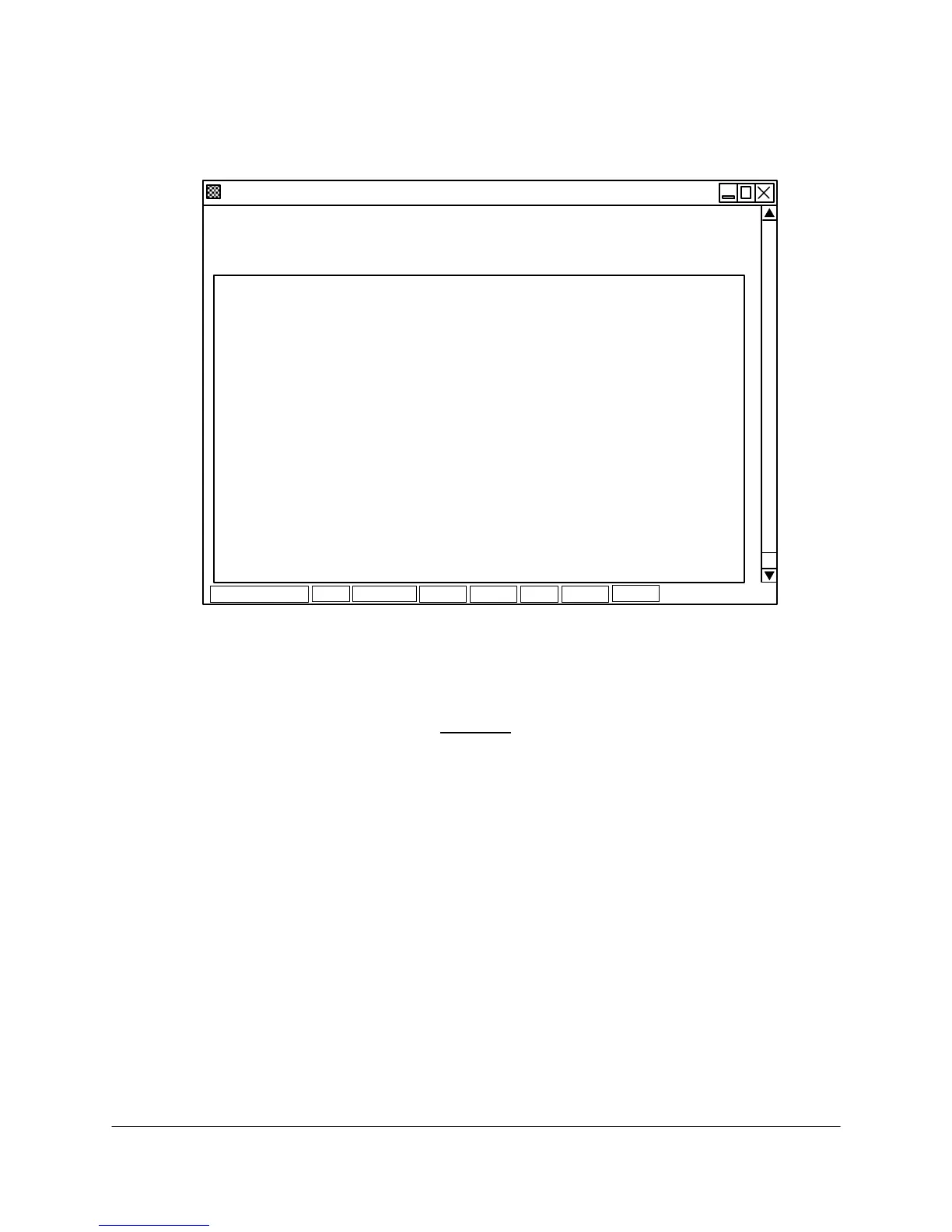8-66 2000-OSM, F1
Startup
When you have set up the terminal application and connected to the communications board, press
<CTRL> A to invoke the Main Menu (see Figure 8-43).
Vistanet Debugger - HyperTerminal
File
Edit
VistaNet Monitor Firmware Rev 803V025-1CH
IRQ: 5 Adapter Segment: C800H
Dump Memory Write Memory Main Menu Dump History
Fill Memory Read/Write Memory Promiscuous Mode
Read Memory Show Registers Reset Statistics
Dump Packet Ignore Token Reset state Globally
----------------------------------------
Transmit Requests: 1153790 Receives: 1386507 Address: 199
Buffers Recycled: 1153790 Errors: 10 Mode: 0600
Transmits: 1153785 Last Error: 02 Input: 7
Transmit Errors: 5 Uploads: 1381094 Output: 7
Retries: 10 Queued: 1381094 Max Slack: 4
Collisions: 0 Dequeued: 1381094 Gap Device: 229
Last Destination: 10 Backups: 0 Token Dest: 1
Tokens Issued: 1 Invalid: 0 Next Alive: 1
Tokens Dropped: 19 Tokens Received: 492750699 Next Recvd: 1
Tokens Passed: 47170948 Tokens Dumped: 4 Rate: 37
----------------------------------------
View Cell Transfer Help
Connected 0:00:27
VT100
9600 8-N-1
Figure 8-43. MAIN MENU
When you exit the application, press <CTRL> Z to end the session.
CAUTION
Always end the session before exiting the monitor. While the monitor is intended
to be non-invasive, it can affect operation over time. Some performance
parameters are degraded by the monitor program.
The Main Menu is divided into three sections: the Information Display at the top of the screen, Menu
Items just below this information, and Statistical Data between the two horizontal lines.
Information Display
Firmware Revision: Indicates the part number and revision of the communications board firmware.
The last digit of the revision indicates the position of the high-speed jumper on the board (L indicates
low speed operation, H indicates high-speed operation).
IRQ: Indicates “0” when the laptop PC is connected to the GC Communications Board.
Adapter Segment: Indicates “000H” when the laptop PC is connected to the GC Communications
Board.
